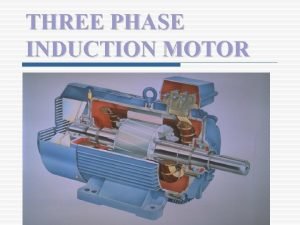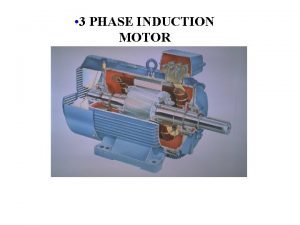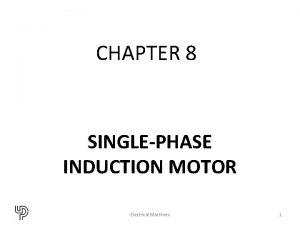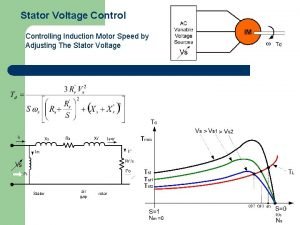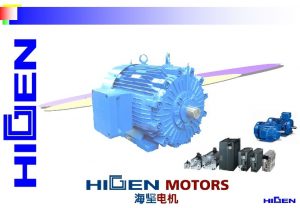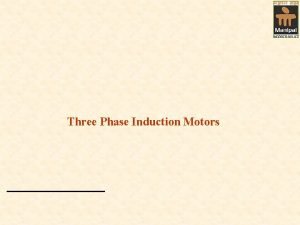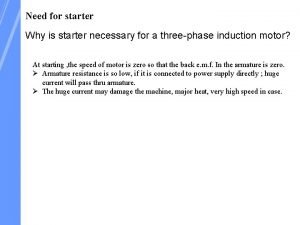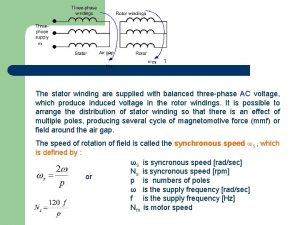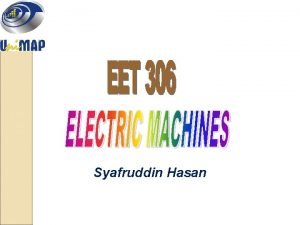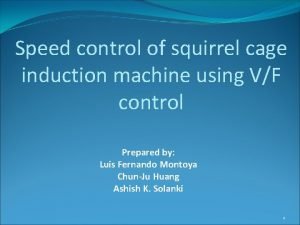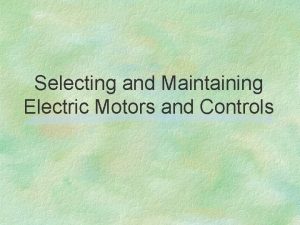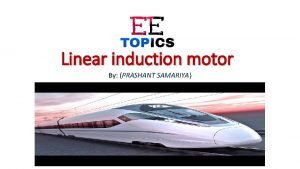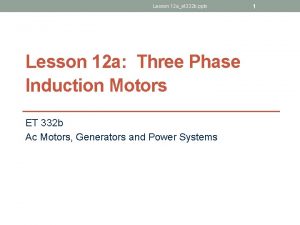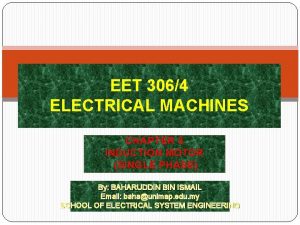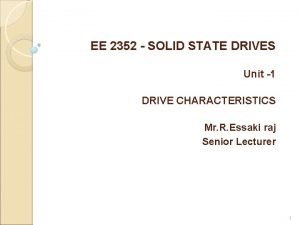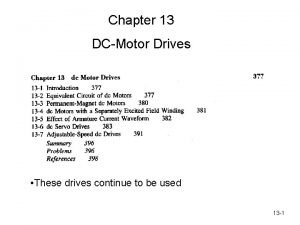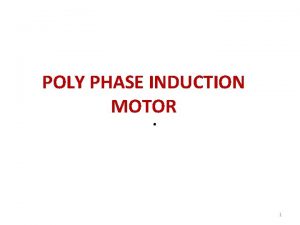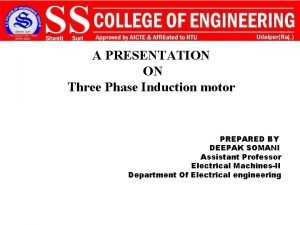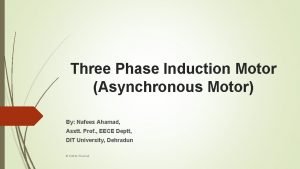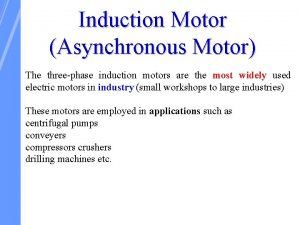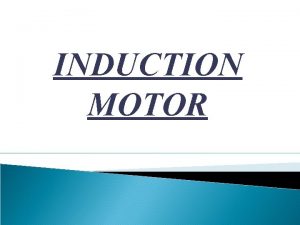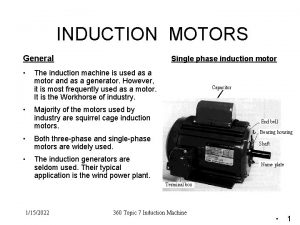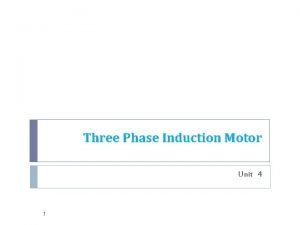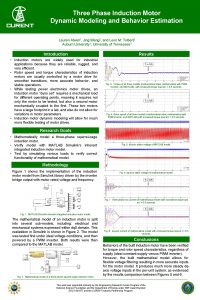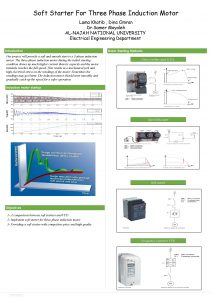A PRESENTATION ON Three Phase Induction motor PREPARED















- Slides: 15

A PRESENTATION ON Three Phase Induction motor PREPARED BY DEEPAK SOMANI Assistant Professor Electrical Machines-II Department Of Electrical engineering

CONTENT INTRODUCTION CONSTRUCTION ROTATING MAGNETIC FIELD PRINCIPLE OF OPERATION POWER LOSSES IN INDUCTION MACHINE TORQUE SPEED CHARACTERSTICS STARTING OF INDUCTION MOTOR

Induction Motors

INTRODUCTION • Three-phase induction motors are the most common and frequently encountered machines in industry • simple design, rugged, low-price, easy maintenance • wide range of power ratings: fractional horsepower to 10 MW • run essentially as constant speed from zero to full load • speed is power source frequency dependent • Not easy to have variable speed control • Requires a variable-frequency power-electronic drive for optimal speed control

Construction An induction motor hastwo main parts stationary stator consisting of a steel frame that supports a hollow cylindrical core Stator of IM

Squirrel cage rotor Wound rotor Notice the slip rings

Construction Slip rings Cutaway in a typical wound - rotor IM. Notice the brushes and the slip rings Brushe s

Rotating Magnetic Field Balanced three phase windings, i. e. mechanically displaced 120 degrees form each other, fed by balanced three phase source A rotating magnetic field with constant magnitude is produced, rotating with a speed nsync 120 fe P rpm

Rotating Magnetic Field

Principle of operation This rotating magnetic field cuts the rotor windings and produces an induced voltage in the rotor windings Due to the fact that the rotor windings are short circuited, for both squirrel cage and wound-rotor, and induced current flows in the rotor windings The rotor current produces another magnetic field A torque is produced as a result of the interaction of those ind k. BR Bs Where ind is the induced torque and BR and BS are the magnetic flux densities of the rotor and the stator

Power losses in Induction machines Copper losses • Copper loss in the stator (PSCL) = I 12 R 1 • Copper loss in the rotor (PRCL) = I 22 R 2 Core loss (Pcore) Mechanical power loss due to friction and windage.

Torque-speed characteristics Typical torque-speed characteristics of induction motor

STARTING OF INDUCTION MOTOR

STARTING OF INDUCTION MOTOR A 3 -phase induction motor is self starting. When the supply is connected to the starter of 3 -phase induction motor a rotating magnetic field is produced and the rotor starts rotating and the induction motor starts. At the time of starting, the motor slip is unity, and the starting current is very large.

THANK YOU…
 How induction motor starts
How induction motor starts Wound rotor
Wound rotor Single phase induction motor
Single phase induction motor Stator voltage control of induction motor
Stator voltage control of induction motor Higen 3 phase induction motor
Higen 3 phase induction motor Power stages of 3 phase induction motor
Power stages of 3 phase induction motor Stator resistance starter
Stator resistance starter Air gap power in induction motor formula
Air gap power in induction motor formula Power flow diagram
Power flow diagram Speed control of squirrel cage induction motor
Speed control of squirrel cage induction motor Repulsion start induction run motor
Repulsion start induction run motor Construction of linear induction motor
Construction of linear induction motor Induction motor power formula
Induction motor power formula Air gap power in induction motor formula
Air gap power in induction motor formula Ee2352 solid state drives
Ee2352 solid state drives 4 quadrant operation of induction motor
4 quadrant operation of induction motor
